Occam's razor
description: philosophical principle used to judge credibility of statements
19 results
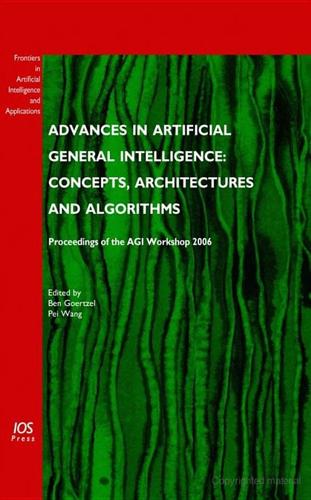
Advances in Artificial General Intelligence: Concepts, Architectures and Algorithms: Proceedings of the Agi Workshop 2006
by
Ben Goertzel
and
Pei Wang
Published 1 Jan 2007
We address the questions of how this occurs, and how it could possibly be accomplished in software. Section one surveys a theory of natural understanding, as follows. One understands a domain when one has mental programs that can be executed to solve problems arising in the domain. Evolution created compact programs understanding domains posed by nature. According to an extrapolation of Occam's razor, a compact enough program solving enough problems drawn from a distribution can only be found if there is simple structure underlying the distribution and the program exploits this structure, in which case the program will generalize by solving most new problems drawn from the distribution. This picture has several important ramifications for attempts to develop Artificial General Intelligence (AGI), suggesting for example, that human intelligence is not in fact general, and that weak methods may not suffice to reproduce human abilities.
…
Section one surveys a theory under which one understands a problem when one has mental programs that can solve it and many naturally occurring variations. Such programs are suggested to arise through discovering a sufficiently concise program that works on a sufficiently large sample of naturally presented problems. By a proposed extrapolation of Occam's razor, such a concise effective program would only exist if the world posing the problems had an underlying structure that the program exploits to solve the problems, and in that case it will generalize to solve many new problems generated by the same world. It is further argued that the concise Occam program leading to human and natural understanding is largely embodied in the genome, which programs development of a modular program in the brain.
…
A first important one is: what about this particular code causes it to understand? A second important one is: given that complexity theory has indicated that many computations are inherently time consuming, how does the mind work so amazingly fast? Computational learning theory has explained generalization as arising from Occam's razor. The most studied context is concept learning, where one sees a series of classified examples, and desires to learn a function that will predict correctly whether new examples are examples of the concept or not. Roughly speaking, one can show that if one presents examples drawn from some process, and finds a simple enough E.
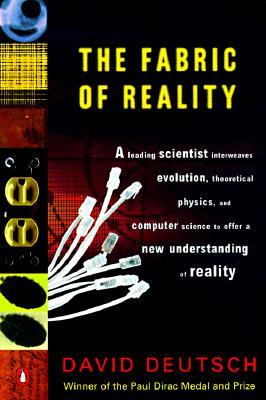
The Fabric of Reality
by
David Deutsch
Published 31 Mar 2012
It is said that Galileo delayed publicly advocating the heliocentric theory for some years, not for fear of the Inquisition but simply for fear of ridicule. To us, the Inquisition's theory looks hopelessly contrived. Why should we accept such a complicated and ad hoc account of why the sky looks as it does, when the unadorned heliocentric cosmology does the same job with less fuss? We may cite the principle of Occam's razor: 'do not multiply entities beyond necessity' - or, as I prefer to put it, 'do not complicate explanations beyond necessity', because if you do, the unnecessary complications themselves remain unexplained. However, whether an explanation is or is not 'contrived' or 'unnecessarily complicated' depends on all the other ideas and explanations that make up one's world-view.
…
TERMINOLOGY heliocentric theory The theory that the Earth moves round the Sun, and spins on its own axis. geocentric theory The theory that the Earth is at rest and other astronomical bodies move around it. realism The theory that an external physical universe exists objectively and affects us through our senses. Occam's razor (My formulation) Do not complicate explanations beyond necessity, because if you do, the unnecessary complications themselves will remain unexplained. Dr Johnson's criterion (My formulation) If it can kick back, it exists. A more elaborate version is: If, according to the simplest explanation, an entity is complex and autonomous, then that entity is real.
…
DAVID: So your additional postulate is not just superfluous, it is positively bad. In general, perverse but unrefuted theories which one can propose off the cuff fall roughly into two categories. There are theories that postulate unobservable entities, such as particles that do not interact with any other matter. They can be rejected for solving nothing ('Occam's razor', if you like). And there are theories, like yours, that predict unexplained observable {160} anomalies. They can be rejected for solving nothing and spoiling existing solutions. It is not, I hasten to add, that they conflict with existing observations. It is that they remove the explanatory power from existing theories by asserting that the predictions of those theories have exceptions, but not explaining how.
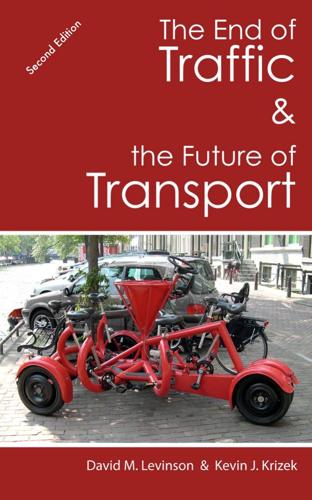
The End of Traffic and the Future of Transport: Second Edition
by
David Levinson
and
Kevin Krizek
Published 17 Aug 2015
NBER Working Paper No 12530. Sept. 2006. http://www.nber.org/papers/w12530 102 Figure 3.9 Source: Schoner, Jessica, Greg Lindsey, and David Levinson (2015) Travel Behavior Over Time. MnDOT Report. 103 Occam's Razor, named for William of Ockham (1287-1347) says "among competing hypotheses, the one with the fewest assumptions should be selected." https://en.wikipedia.org/wiki/Occam's_razor 104 This is discussed in more detail in Garrison, W. L., & Levinson, D. M. (2014). The Transportation Experience: Policy, Planning, and Deployment. Oxford University Press. 105 Figure 3.10 Source: Historian, US Postal Service (2015-03) Pieces of Mail Handled, Number of Post Offices, Income, and Expenses Since 1789. https://about.usps.com/who-we-are/postal-history/pieces-of-mail-since-1789.pdf 106 Kurzweil, Ray (2005) The Singularity is Near: When Human Transcend Biology.
…
School buses are likely due to changes in schools (which are bigger and farther apart) and increased movement away from the neighborhood school. Illustrative data for the Twin Cities is shown in Figure 3.9.102 Discussion It is hard to say which, if any, of these explanations have the fewest assumptions, thereby satisfying Occam's Razor.103 Instead, like Agatha Christie's novel, the guilt is spread over many shoulders. None of these explanations can be single-handedly responsible. As matters unfold over the upcoming years, more characters will be added and the specific role of any one culprit might become more pronounced. But for the time being, traffic is suffering a slow death by a thousand cuts.
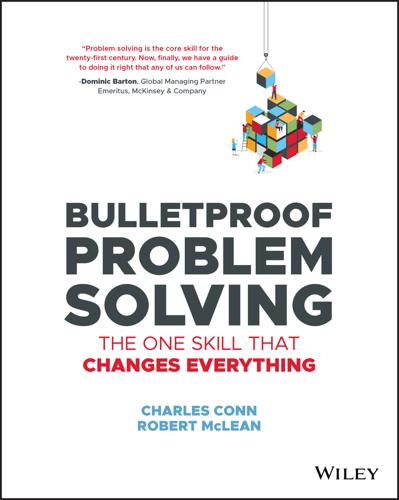
Bulletproof Problem Solving
by
Charles Conn
and
Robert McLean
Published 6 Mar 2019
In Exhibit 5.1, we explore a range of heuristics that are useful for individuals, enterprises, and citizens. When you are asked to list your top 10 songs of all time, it's hard to leave some classics off the list. So too it is with our top heuristics. We didn't invent them, we just make good use of them and so can you. EXHIBIT 5.1 The oldest of these is definitely Occam's Razor—favor the simplest solution that fits the facts—which originated in the fourteenth century. It tells us to select the hypothesis that has the fewest assumptions. One way of seeing why this make sense is a simple math example: If you have four assumptions that are independent of each other, with an 80% separate chance of being correct, the probability that all four will be correct is just over 40%.
…
One way of seeing why this make sense is a simple math example: If you have four assumptions that are independent of each other, with an 80% separate chance of being correct, the probability that all four will be correct is just over 40%. With two assumptions and the same probabilities, it is 64%. For many problems the fewer the assumptions you have the better. Practically speaking, this means avoiding complex, indirect, or inferential explanations, at least as our starting point. Related to Occam's Razor are one‐reason decision heuristics, including reasoning by elimination and a fortiori reasoning, where you eliminate alternatives that are less attractive.2 The important reminder is not to get committed to a simple answer with few assumptions when the facts and evidence are pointing to a more nuanced or complex answer (remember the availability and substitution biases from Chapter 4).
…
See Net present value Nursing outcomes, improvement, 67e Nussbaumer Knaflic, Cole, 182, 190 O Obesity analysis, 238–239 call to action, 239–243 case study, 143–146 high‐leverage problems, support, 242 incentives, 241 interventions, UK cost curve, 239e McKinsey Global Institute (MGI) study, 143, 236–239 policy variables, income/education (impact), 240 prevalence, measurement, 144, 144e problem, cleaving/definition, 237–238 rates, increase, 240 regulatory interventions, 237 social networks, impact, 241–242 walkability/active transport, 242–243 wicked problem, 236–237 Observations/complications, usage, 95 Occam's Razor, 114 Ohno, Taichi, 128 One‐day answers, 95–97, 184–185 example, 96 structuring, 95 Options, value, 216 Order of magnitude analysis, 114, 137 Ostrom, Elinor, 244 Outcomes, 196 distribution, 122–123, 122e economic outcomes, 158 policy/parameter change, impact, 157 prediction, 140 production, 130 value, 117–118 Output, sale, 214 Outside views, solicitation, 105 Overfishing common‐resource problem, 244 definition, 244 Morro Bay, case study, 247–250 obstacles, 246–247 restructuring, 246–247 solutions, 245–246, 245e wicked problem, 243–250 Over optimism, 101 P Pacific Fishery Management Council (PFMC), 244 Pacific salmon abundance/diversity, 54e change, vision (setting), 231e long‐term strategy portfolio, management (case study), 226–233 preservation, problem statement refinement, 34–39 problem statement evolution, 38e problem worksheet, 36e regional/topical strategies, management, 230–233 saving, case study, 53–58, 57e strategy portfolio, 229e TOC example, 227e Pain points, 44 Palter, Robert, 122 Pareto Principle, 114–115 Pareto Thinking, 129 Pareto, Vilfredo, 114 Payoff table, preparation, 171–172 Pearl, Judea, 151 Personal assets/savings, importance, 210 Personal problem solving, cleaving frame examples, 80 Perspective taking, 104 PFMC.

A Wealth of Common Sense: Why Simplicity Trumps Complexity in Any Investment Plan
by
Ben Carlson
Published 14 May 2015
Instead of looking at very specific data to try to solve problems, Einstein would look for very broad, overarching, and simple principles that could be applied with other big-picture theories to create truly ground-breaking work. Einstein always said that a principle by itself predicts nothing specific, but once you combined a number of principles together there could be unlimited implications on the problems you could solve.13 Occam's razor states that complicated assumptions may work out, but in an uncertain world, the simpler the choice, the better. Just like with David Swensen, sometimes it takes a very intelligent person to see and experience complexity before they come to the realization that simplicity works better. Munger understands this as well as anyone.
…
As usual, Wall Street was more than willing to step in with a plethora of complex strategies to fill this void including bear market funds, double and triple leveraged inverse ETFs, market neutral funds, long/short funds and a host of other fund structures that promised to protect investors on the downside. Oh, and by the way, here's a hefty fee for your troubles as we try to fight the last war for you by investing in what would have worked in 2008. Remember, Occam's razor states that although the more complicated strategies could possibly prove correct, with no certainty about the future, the simplest solution usually makes for the best answer. Little did most investors realize that this was the case once again and we have a long history to prove it. Going back to 1928, the S&P 500 has finished the year down 24 times, or roughly one out of every four years for an average loss of almost –14 percent.
…
Index 401(k) retirement plans 60/40 portfolio 80/20 rule active mutual funds Adams, John Quincy Affleck, Ben Alabama Crimson Tide all-time highs Annaly Capital Management Apple AQR Capital Management Asness, Cliff asset allocation asset allocation quilt Back to the Future Part II Barber, Brad Barton, Harris beating the market behavior gap benchmarking Benke, Alex Berkshire Hathaway Bernanke, Ben Bernstein, Peter Bernstein, William betterment Black Monday black swans Bogle, John Boiler Room bonds Bryant, Bear Bryant, Kobe Buffett, Warren BusinessWeek buy and hold Caesar, Julius Candy, John Case-Shiller Index CFA CFP Charles Schwab chasing performance Churchill, Winston Cincinnati Bengals commodities compensation Confucius correlation currency fluctuations “The Death of Equities” degrees of active and passive management Descartes, Rene diversification dividends doing nothing dollar cost averaging Dow Jones Industrial Average Dunn, Elizabeth eBay Efficient Market Hypothesis (EMH) eight symptoms of group think Einstein, Albert Ellis, Charles xv emerging markets emotional intelligence empathy endowment funds envy exchange-traded funds (ETFs) Farley, Chris fear and greed Federal Reserve Ferri, Rick Fidelity Investments financial advice financial advisors questions to ask financial pundits Gekko, Gordon Gleason, Jackie Glenn, Joshua globalization Goleman, Daniel Graham, Benjamin Great Depression Greenspan, Stephen growth stocks Harvard Endowment Fund herd mentality home country bias Housel, Morgan housing how to be a good client Hsu, Jason Ibbotson, Roger illusion of control incentives independence index funds inflation institutional investors The Intelligent Investor (Graham) international equity diversification invert investment plan investment policy statement (IPS) Japan JP Morgan junk bonds Kahneman, Daniel Kaplan, Paul Keynes, John Maynard Kinnel, Russ Klarman, Seth Lehman Brothers Les Amants life cycle investing liftoff Livermore, Jesse lollapalooza effects longevity risk loss aversion lost decade LSU Tigers Madoff, Bernie margin of safety market cycles market Timing Marks, Howard Mauboussin, Michael McFly, Marty mean reversion Jordan, Michael Michelin star ratings midcaps millennials momentum Montana, Joe Monte Carlo Simulation Morning star motivation Mr. Market Munger, Charlie Murray, Nick mutual fund closures mutual fund flows NASA NASDAQ negative knowledge New York Stock Exchange newsletters Nifty Fifty large-cap growth stocks Nobel Prize Norton, Michael O'Shaughnessy, Jim Occam's razor Odean, Terrance Ono, Jiro overdiversification Paine, Thomas paradox of skill Pareto, Vilfredo patience pension plans perma-bears perma-bulls persistence Peter Lynch Pioneering Portfolio Management (Swensen) Playsted Wood, James Ponzi scheme Poor Charlie's Almanack (Munger) Poor Richard's Almanack precious metals preferred stocks quantitative investment strategies real estate rebalancing recessions regret minimization REITs Research Affiliates restaurant menus Richards, Carl risk aversion risk premium risk tolerance questionnaire robo-advisors Roth IRA Rule Number Russell 3000 S&P, 500 42 Saban, Nick San Francisco saving Schwed, Fred self-awareness self-regulation sell-side research Siegel, Jeremy signaling Significant Objects Project smallcaps smartbeta Soros, George South Sea Bubble standard deviation Statman, Meir Stewart, Porter Stock Picking Stocks for the Long Run (Siegel) stress sushi Swensen, David symptoms of groupthink Tannen, Biff taxes Taylor, John Templeton, John ten-year Treasury bonds Thaler, Richard trading activity Treasury bills Truman, Harry tulip bubble uncertainty unemployment rate and stock market returns value investing value-add from financial advice Vanguard volatility Vonnegut, Kurt Walker, Rob Walmart wealthfront What Works on Wall Street (O'Shaughnessy) will power Yale University Endowment Fund yield Zweig, Jason WILEY END USER LICENSE AGREEMENT Go to www.wiley.com/go/eula to access Wiley’s ebook EULA.

Sorting Things Out: Classification and Its Consequences (Inside Technology)
by
Geoffrey C. Bowker
Published 24 Aug 2000
As we note above, this was not the number of diseases The Kindness of Strangers 65 in the world, but the number of lines on Austrian census forms. If too many diseases got identified then there would be no way of maintain ing and analyzing registers of causes of death, as the technology would not hold more information. In addition to this inheritance, there is a practical Occam's razor. When doctors come to code causes of death they are frequently faced with a set of difficult judgments (which may require an autopsy and further diagnostic work) . They can simply go for the easiest way, by using a generalized 'other' category. They can then get back to dealing with their live patients (Fagot-Largeault 1 989, chapter 3 ).
…
Rather, parallel or multiple-repre sentational forms are required. So, for example, instead of trying to represent a disorder of energy diagnosed with acupuncture as a nerv ous disease in western medical terms, a parallel representational scheme will avoid imposing inappropriate categories. 2. Pragmatically, the Occam's razor of the coding of information means that too few categories will result in information that is not useful. 23 For instance, alive or dead, while having the virtues of sim plicity and [near] exhaustiveness, do not tell us much about disease in the world. On the other hand, too many categories will result in increased bias, or randomness, on the part of those filling out the forms.
…
These are similar to dilemmas faced by many designers of information systems in a range of application domains. How does one make a successful, practically workable classification scheme of work practice? The problem of how to produce any clas sification scheme is an old one in the philosophy of knowledge, from Occam's razor to Quine's objects. Blurring categories means that existing differences are covered up, merged, or removed altogether; while distinctions construct new partitions or reinforcement of exist ing differences. This mutual process of constructing and shaping differences through classification systems is crucial in anyone's conceptualization of reality; it is the core of much taxonomic anthro pology.
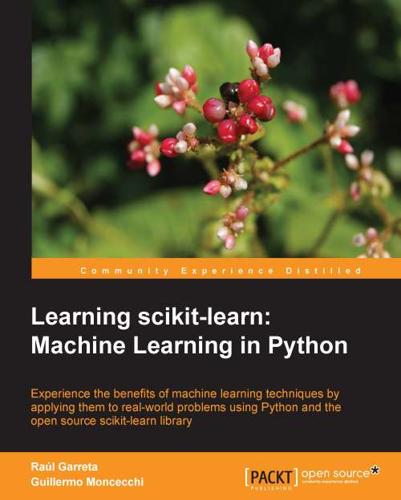
Learning Scikit-Learn: Machine Learning in Python
by
Raúl Garreta
and
Guillermo Moncecchi
Published 14 Sep 2013
As our training data is not enough, we risk producing a model that could be very good at predicting the target class on the training dataset but fail miserably when faced with new data, that is, our model does not have the generalization power. That is why it is so important to evaluate our methods on previously unseen data. The general rule is that, in order to avoid overfitting, we should prefer simple (that is, with less parameters) methods, something that could be seen as an instantiation of the philosophical principle of Occam's razor, which states that among competing hypotheses, the hypothesis with the fewest assumptions should be selected. However, we should also take into account Einstein's words: "Everything should be made as simple as possible, but not simpler." The idem curse of dimensionality may suggest that we keep our models simple, but on the other hand, if our model is too simple we run the risk of suffering from underfitting.
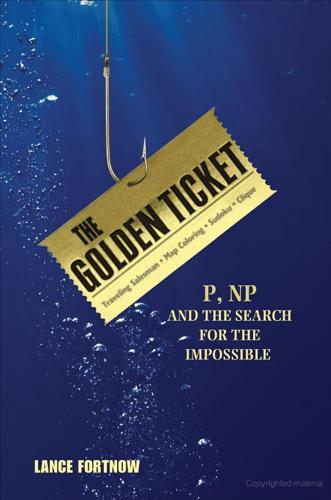
The Golden Ticket: P, NP, and the Search for the Impossible
by
Lance Fortnow
Published 30 Mar 2013
We know him best for Occam’s razor, the principle that the simplest explanation is usually the best, denoted a “razor” supposedly because it allows us to “shave off” the complicated parts of a theory, leaving the simple explanation behind. This philosophy guided scientific and philosophical thinking throughout the Renaissance and continues to guide us today. René Descartes, a seventeenth-century French philosopher, used the Occam razor principle to argue even for the existence of the world around him. Descartes is, of course, most famous for his philosophical statement “Cogito ergo sum,” or “I think, therefore I am.” In his treatise Discourse of the Method, Descartes from assuming nothing deduces his own existence from the mere fact that he can reason about himself.
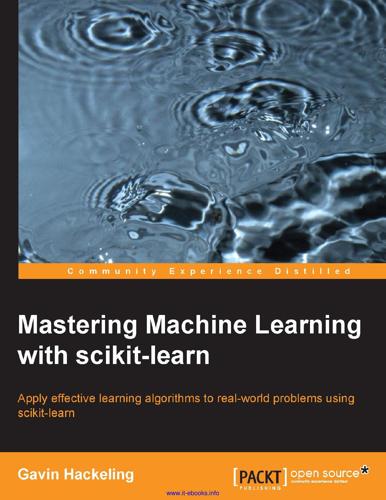
Mastering Machine Learning With Scikit-Learn
by
Gavin Hackeling
Published 31 Oct 2014
This model exactly fits the training data, but fails to learn the real relationship between size and price. [ 39 ] www.it-ebooks.info Linear Regression Regularization Regularization is a collection of techniques that can be used to prevent over-fitting. Regularization adds information to a problem, often in the form of a penalty against complexity, to a problem. Occam's razor states that a hypothesis with the fewest assumptions is the best. Accordingly, regularization attempts to find the simplest model that explains the data. scikit-learn provides several regularized linear regression models. Ridge regression, also known as Tikhonov regularization, penalizes model parameters that become too large.

Forever Free
by
Joe Haldeman
Published 14 Oct 2000
"Like a bungee jump," our fan of the twentieth century added. "With your starship," she continued, "you were actually leaving. You were going into the territory of the nameless." "They told you this?" Marygay asked. "You talk to the nameless?" "No," the man said. "It's just inference." "You would call it Occam's Razor," the woman said. "It's the least complicated explanation." "So we've provoked the wrath of God," I said. "If you want to put it that way," the plain one said. "What we're trying to figure out is how to get God's attention." I wanted to scream, but Sara expressed it more calmly. "If they're omnipotent and everywhere … we have their attention.

You're Not Fooling Anyone When You Take Your Laptop to a Coffee Shop: Scalzi on Writing
by
John Scalzi
Published 28 Jan 2007
This is of course begging the question as to why they're so good, but just as American authors can have many reasons for slumping at the moment, these British authors can have myriad reasons for being at the top of their game, possibly some relating to nationality but other factors having little or nothing to do with it at all. It's fun to ascribe an overarching reason for the inclusion of these five particular books, to try to impose some sort of uniform causality. But ultimately these rationales aren't going to pan out. Occam's Razor returns us to the "really good book" theory. It works for me. *** The next piece you can see as a companion piece to "Science Fiction Outreach"— same ideas, many of the same examples, but a slightly different end point.—JS The Myth of the Science Fiction Monoculture (August 2, 2005) A number of people have written to alert me to Robert K.J.
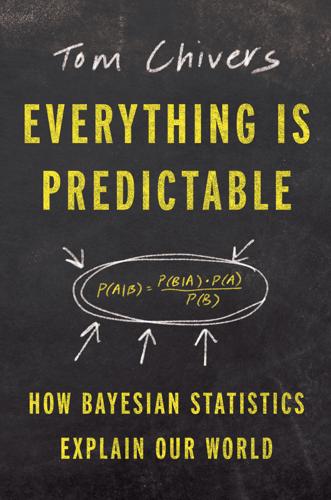
Everything Is Predictable: How Bayesian Statistics Explain Our World
by
Tom Chivers
Published 6 May 2024
Much of the following is drawn from Ananyo Bhattacharya, The Man from the Future: the Visionary Life of John von Neumann (New York: W. W. Norton, 2022), 160. 15. J. von Neumann and O. Morgenstern, Theory of Games and Economic Behavior, 6th printing (Princeton, NJ: Princeton University Press, 1955), 10. 16. Eliezer Yudkowsky, “Occam’s Razor,” Read the Sequences, 2015, 115, https://www.readthesequences.com/Occams-Razor. 17. Michal Koucký, “A Brief Introduction to Kolmogorov Complexity, University Karlova, May 4, 2006”, http://iuuk.mff.cuni.cz/~koucky/vyuka/ZS2013/kolmcomp.pdf. 18. This example is taken from Jaynes, Probability Theory, 4. 19. S. G. Soal, “Fresh Light on Card Guessing: Some New Effects,” Proceedings of the Society for Psychical Research 46 (1940): 152–98. 20.

The Great Railway Bazaar
by
Paul Theroux
Published 1 Jan 1975
From the train I could turn my eyes to the mountains and almost forget the country's name, but the truth was closer and cruel: the Vietnamese had been damaged and then abandoned, almost as if, dressed in our clothes, they had been mistaken for us and shot at; as if, just when they had come to believe that we were identified with them, we had bolted. It was not that simple, but it was nearer to describing that sad history than the urgent opinions of anguished Americans who, stropping Occam's Razor, classified the war as a string of atrocities, a series of purely political errors, or a piece of interrupted heroism. The tragedy was that we had come, and, from the beginning, had not planned to stay: Danang was to be proof of that. The train was under the gigantic Hai Van Pass ('The Pass of Clouds'), a natural division on the north side of Danang, like a Roman wall.

Think Like a Rocket Scientist: Simple Strategies You Can Use to Make Giant Leaps in Work and Life
by
Ozan Varol
Published 13 Apr 2020
Tracy Staedter, “Dime-Size Thrusters Could Propel Satellites, Spacecraft,” Space.com, March 23, 2017, www.space.com/36180-dime-size-accion-thrusters-propel-spacecraft.html. 51. Keith Tidman, “Occam’s Razor: On the Virtue of Simplicity,” Philosophical Investigations, May 28, 2018, www.philosophical-investigations.org/2018/05/occams-razor-on-virtue-of-simplicity.html. 52. Sarah Freeman, “Alinea 2.0: Reinventing One of the World’s Best Restaurants: Why Grant Achatz and Nick Kokonas Hit the Reset Button,” Chicago Eater, May 19, 2016, https://chicago.eater.com/2016/5/19/11695724/alinea-chicago-grant-achatz-nick-kokonas. 53. Richard Duppa et al., The Lives and Works of Michael Angelo and Raphael (London: Bell & Daldy 1872), 151. 54.
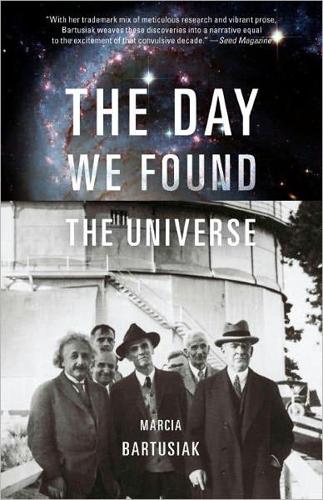
Day We Found the Universe
by
Marcia Bartusiak
Published 6 Apr 2009
For Curtis the faint novae were bona fide proof that the nebulae resided far beyond the borders of the Milky Way. But Curtis was championing this idea too early, before the physics could explain it. Many of his fellow astronomers were still fairly skeptical, unwilling to conjure up new celestial creatures willy-nilly. For them “Occam's Razor” prevailed, the long-standing rule of thumb established by the English philosopher William of Occam in the fourteenth century. “Pluralitas non est ponenda sine necessitate,” declared Occam, which can be translated as “plurality must not be posited without necessity.” Best to choose the simplest interpretation over an unnecessarily complex one—unless forced to do otherwise.

The Teeth of the Tiger
by
Tom Clancy
Published 2 Jan 1998
"How did we find out?" "Made the local papers that an official at the Israeli Embassy got whacked while taking a leak. The Agency Chief of Station fingered him for a spook. Some people at Langley are running around in circles trying to figure what it all means, but they'll probably fall back on Occam's razor and buy what the local cops think. Dead man. No wallet. Robbery where the crook got a little carried away." "You think the Israelis will buy that?" Granger wondered. "About as soon as they serve roast pork at an embassy dinner. He was knifed between the first and second vertebrae. A street hood is more likely to slash the throat, but a pro knows that's messy and noisy.

Hope Dies Last: Visionary People Across the World, Fighting to Find Us a Future
by
Alan Weisman
Published 21 Apr 2025
“A Record of Progress and Milestones of the HTS Magnet Demonstration.” https://htsmagnet.cfs.energy. Energy Impact Center. “Ep.123—Dennis Whyte, MIT.” June 19, 2020. https://www.youtube.com/watch?v=m4JTpiqABp8. Engine Ventures. https://engineventures.com/team/founder-advisors. Foley, Jonathan. “Occam’s Razor for the Planet.” Medium, March 5, 2021. https://globalecoguy.org/occams-razor-for-the-planet-b3a720cc961c. Fountain, Henry. “Can Fusion Solve the Climate Crisis?” New York Times, December 13, 2022. https://www.nytimes.com/2022/12/13/climate/fusion-climate-change.html. Gainor, Danya, and Angela Dewan. “A Giant Donut-Shaped Machine Just Proved a Near-Limitless Clean Power Source Is Possible.”

Antarctica
by
Kim Stanley Robinson
Published 6 Jul 1987
There is a big historical section describing the rise of science, showing that science is self-organizing and self-actualizing, and always trying to get better, to be more scientific, as one of its rules. And there is a big middle section showing how various features of normal scientific practice, the methodology and so on, are in fact ethical positions. Things like reproducibility, or Occam's razor, or peer review-almost everything in science that makes it specifically scientific, the authors show, is Utopian. Then the final section tells what the ramifications of this fact are, how scientists should behave now, once they realize this truth. And the book is a kind of underground bestseller!

Data Mining: Concepts and Techniques: Concepts and Techniques
by
Jiawei Han
,
Micheline Kamber
and
Jian Pei
Published 21 Jun 2011
[Dob01] Dobson, A.J., An Introduction to Generalized Linear Models. 2nd ed. (2001) Chapman & Hall . [Dom94] Domingos, P., The RISE system: Conquering without separating, In: Proc. 1994 IEEE Int. Conf. Tools with Artificial Intelligence (TAI’94) New Orleans, LA. (1994), pp. 704–707. [Dom99] Domingos, P., The role of Occam's razor in knowledge discovery, Data Mining and Knowledge Discovery 3 (1999) 409–425. [DP96] Domingos, P.; Pazzani, M., Beyond independence: Conditions for the optimality of the simple Bayesian classifier, In: Proc. 1996 Int. Conf. Machine Learning (ML’96) Bari, Italy. (July 1996), pp. 105–112. [DP97] Devore, J.; Peck, R., Statistics: The Exploration and Analysis of Data. (1997) Duxbury Press .